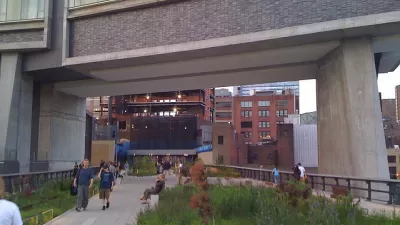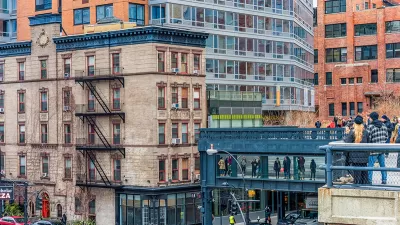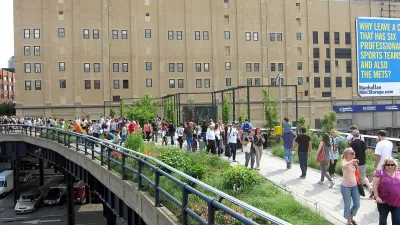The New York Times published four letters in response to an earlier op-ed from the self-described, “bitterly nostalgic” blogger, Jeremiah Moss, who blasted the popularity of the High Line, including one letter from the High Line founders.
Moss' op-ed, covered here: "The Downside of the High Line", blames the High Line's popularity for the gentrification of the West Chelsea district.
Park founders Joshua David and Robert Hammond write, "The High Line stands today thanks to a broad community of New Yorkers who rallied together to transform it from a derelict elevated railway into a beloved public space, free and open to all.
More than a decade ago, we founded Friends of the High Line with the goal of creating a great community amenity and an extraordinary public space. Our goal remains the same today."
Karen Bassler writes, "The garages and auto-part shops that Mr. Moss misses are part of an older way of living in the city, one that contributed to quality-of-life detractors: honking horns, idling engines, blaring car alarms and smog.
The High Line is a terrific example of changing the old (railways) into the new (parks) in a way that adds amenities to the lives of people living around them."
Andre Lund writes, "Sharing the treasures of the city with visitors is an undeniable fact of life for those of us who call Manhattan home. Like so many other "must sees" in the city, New Yorkers should view the High Line with pride, eager to show it off, not require a local driver's license to enter."
Joan Garvin, "a 30-year resident of Chelsea", writes, "I'm thankful to have this exquisite garden and community space steps from my front door. It's important to remember that the park preserves a decades-old railway that would have otherwise been torn down. (Indeed, segments of the original railroad tracks, last used in 1980, can be seen amongst the wildflowers growing through the old ties.) Thanks to neighborhood residents, this piece of the city's heritage was not only saved but also enhanced for all to enjoy."
Moss' controversial essay and the subsequent letters it generated, may ironically serve to lure more visitors to this Manhattan attraction, no doubt causing Moss more consternation; but it may, to his satisfaction, also increase the readership of his blog, Jeremiah's Vanishing New York.
FULL STORY: LETTERS: A High Line That’s Good for New York

Maui's Vacation Rental Debate Turns Ugly
Verbal attacks, misinformation campaigns and fistfights plague a high-stakes debate to convert thousands of vacation rentals into long-term housing.

Planetizen Federal Action Tracker
A weekly monitor of how Trump’s orders and actions are impacting planners and planning in America.

San Francisco Suspends Traffic Calming Amidst Record Deaths
Citing “a challenging fiscal landscape,” the city will cease the program on the heels of 42 traffic deaths, including 24 pedestrians.

Defunct Pittsburgh Power Plant to Become Residential Tower
A decommissioned steam heat plant will be redeveloped into almost 100 affordable housing units.

Trump Prompts Restructuring of Transportation Research Board in “Unprecedented Overreach”
The TRB has eliminated more than half of its committees including those focused on climate, equity, and cities.

Amtrak Rolls Out New Orleans to Alabama “Mardi Gras” Train
The new service will operate morning and evening departures between Mobile and New Orleans.
Urban Design for Planners 1: Software Tools
This six-course series explores essential urban design concepts using open source software and equips planners with the tools they need to participate fully in the urban design process.
Planning for Universal Design
Learn the tools for implementing Universal Design in planning regulations.
Heyer Gruel & Associates PA
JM Goldson LLC
Custer County Colorado
City of Camden Redevelopment Agency
City of Astoria
Transportation Research & Education Center (TREC) at Portland State University
Jefferson Parish Government
Camden Redevelopment Agency
City of Claremont





























